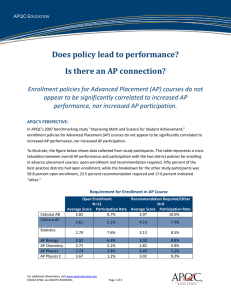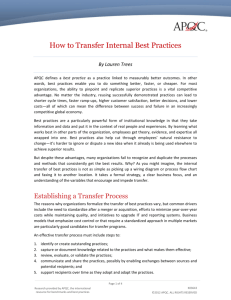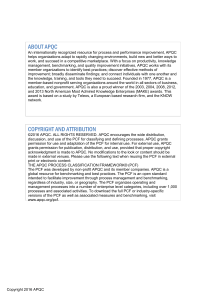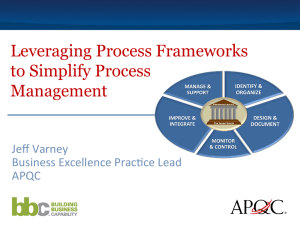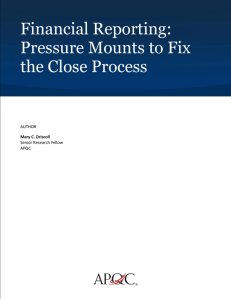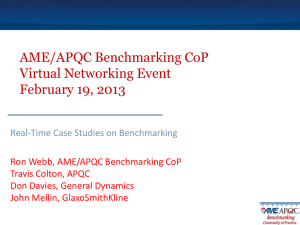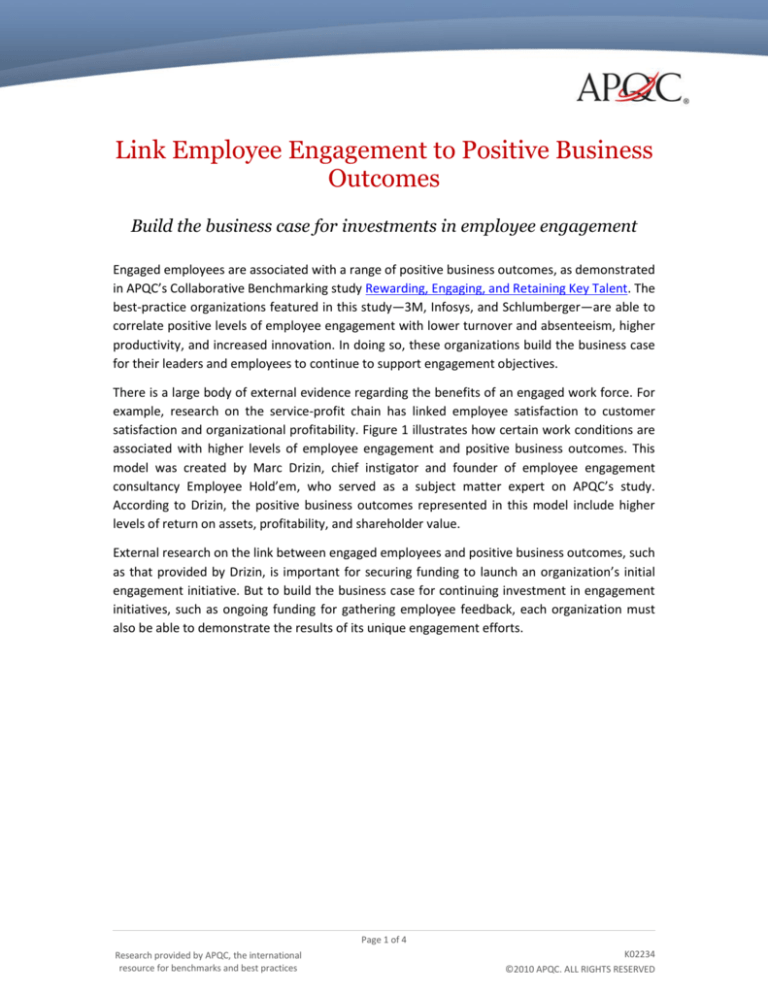
Link Employee Engagement to Positive Business
Outcomes
Build the business case for investments in employee engagement
Engaged employees are associated with a range of positive business outcomes, as demonstrated
in APQC’s Collaborative Benchmarking study Rewarding, Engaging, and Retaining Key Talent. The
best-practice organizations featured in this study—3M, Infosys, and Schlumberger—are able to
correlate positive levels of employee engagement with lower turnover and absenteeism, higher
productivity, and increased innovation. In doing so, these organizations build the business case
for their leaders and employees to continue to support engagement objectives.
There is a large body of external evidence regarding the benefits of an engaged work force. For
example, research on the service-profit chain has linked employee satisfaction to customer
satisfaction and organizational profitability. Figure 1 illustrates how certain work conditions are
associated with higher levels of employee engagement and positive business outcomes. This
model was created by Marc Drizin, chief instigator and founder of employee engagement
consultancy Employee Hold’em, who served as a subject matter expert on APQC’s study.
According to Drizin, the positive business outcomes represented in this model include higher
levels of return on assets, profitability, and shareholder value.
External research on the link between engaged employees and positive business outcomes, such
as that provided by Drizin, is important for securing funding to launch an organization’s initial
engagement initiative. But to build the business case for continuing investment in engagement
initiatives, such as ongoing funding for gathering employee feedback, each organization must
also be able to demonstrate the results of its unique engagement efforts.
Page 1 of 4
Research provided by APQC, the international
resource for benchmarks and best practices
K02234
©2010 APQC. ALL RIGHTS RESERVED
Employee Hold’em Model of Work Force Engagement
Positive business outcomes
Outcomes of an engaged work force:
stay longer
work harder
recommend the organization
Desired state: engaged work force
Attraction
Motivation
Retention
Components:
Performance management
Components:
Rewards and recognition
Components:
Reputation management
Work force selection
Work /life balance
Stakeholder input
Opportunities for advancement
Daily satisfaction
Effective senior leadership
Organizational orientation
Ethics, diversity, and safety
Training and development
Tools and technology
Figure 1
How Best-Practice Organizations Do It
Below are examples of how best-practice organizations 3M, Infosys, and Schlumberger make the
connection between having engaged employees and realizing desirable business results.
3M
3M looks for correlations between engagement and business outcomes, most notably
innovation. For example, the organization conducted a study among its business laboratories to
measure the relationship between engagement and innovation. The business laboratories that
had more engaged employees (per results of a worldwide business-unit survey) were more
innovative (i.e., produced more products) over a two-year period than business laboratories
where employees were less engaged. Since 3M relies heavily on innovation to maintain and
increase its profitability, these findings were pertinent. 3M has also been able to correlate
higher levels of job satisfaction with lower levels of employee absenteeism.
Page 2 of 4
Research provided by APQC, the international
resource for benchmarks and best practices
K02234
©2010 APQC. ALL RIGHTS RESERVED
INFOSYS
Measurement efforts at Infosys have demonstrated a link between employee engagement and
customer satisfaction. The organization recently completed an analysis of its customer
satisfaction data and is correlating the results with the business units’ employee engagement
statistics. The organization has already found that the business units with the highest
profitability consistently have the most engaged work forces.
SCHLUMBERGER
Schlumberger reviews monthly service quality statistics organized by client, geography, and type
of service. Any deterioration in service quality indicators can usually be traced to a drop of
management engagement or a drop in employee motivation. Conversely, an increase in quality
of service indicates that operations are well-managed and that employees are properly trained,
have the right experience level, and are motivated.
Conclusion
Evidence of a general connection between employee engagement and business results is
essential to build the initial business case for investing in an engagement strategy. However, an
organization must measure its own performance and explicitly link its employee engagement
activities to tangible business results if it expects leaders to continue to allocate time and money
to ongoing engagement objectives.
At 3M, the initial business case for employee engagement work was provided by a consulting
company study, which demonstrated that organizations with higher levels of employee
engagement also have higher returns on assets, profitability, and shareholder value. When its
engagement work was well underway, 3M began conducting its own correlation studies, such as
the engagement-innovation study mentioned earlier.
Karen B. Paul, manager of 3M’s HR engagement and measurement center of excellence, notes
that, when it comes to assessing the business outcomes of engagement initiatives, qualitative
outcomes are just as important as quantitative ones. According to Paul, “Success is when the
hallways buzz with energy, when people come to work excited, and when they are proud to be
associated with your dynamic organization. Ultimately, the value you create within your
organization translates into shareholder wealth.”
For more information on best practices for engaging employees at 3M, Infosys, and
Schlumberger, see APQC’s 2010 report Rewarding, Engaging, and Retaining Key Talent.
Page 3 of 4
Research provided by APQC, the international
resource for benchmarks and best practices
K02234
©2010 APQC. ALL RIGHTS RESERVED
ABOUT APQC
APQC is the leading resource for performance analytics, best practices, process improvement,
and knowledge management. The organization’s research studies, benchmarking databases, and
renowned Knowledge Base provide managers with intelligence to transform their organizations.
A member-based nonprofit founded in 1977, APQC serves Global 1000, government, and
nonprofit organizations. For information, visit www.apqc.org or call +1-713-681-4020.
Page 4 of 4
Research provided by APQC, the international
resource for benchmarks and best practices
K02234
©2010 APQC. ALL RIGHTS RESERVED

